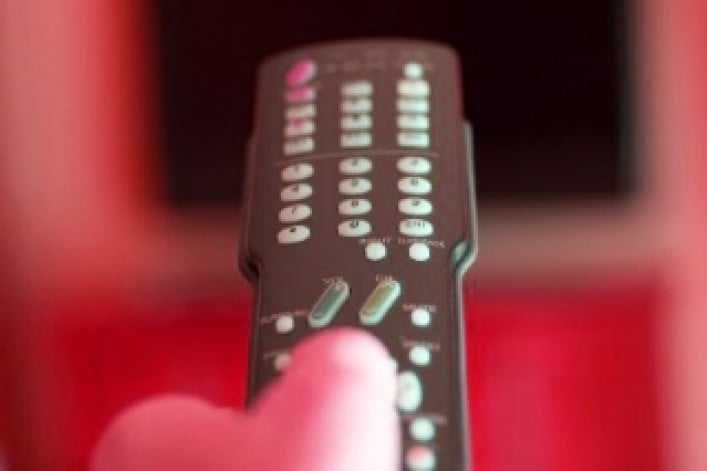FiOS: Nice service if you can get it

Since Verizon started wiring New York City with superfast fiberoptic cable service two years ago, many residents have eyed the coming of FiOS with a longing normally reserved for Trader Joe’s.
Inflaming the hearts of the coaxial-cable bound are reviews from those who’ve ascended to fiber-erotic heaven.
“Picture quality for both cable and broadcast stations on FiOS is head and shoulders above Time Warner, which suffered pixilation problems along with dropped audio regardless of how many service calls we initiated,” FiOS subscriber Gary Chefetz told us in typically positive feedback.
Chefetz bought a converted downtown condo prewired with both Time Warner and FiOS, and switched to FiOS a year ago.
“I’d compare the Internet connectivity, but it just wouldn’t be fair to Time Warner,” he said. Moreover, “Time Warner’s phone service was sketchy at best while the FiOS VOIP service is indistinguishable from a landline.”
We heard similarly rhapsodic feedback from apartment dwellers whose newly constructed homes came prewired with FiOS.
But some residents hoping to have their existing buildings re-wired have run into trouble on the way to paradise.
1. Boards "beyond frustrated"; it's like the "wild west
“Several of my agents simply cannot get return phone calls from Verizon about installing the service,” the head of a large property management firm told BrickUnderground. “Once they finally speak to someone, it can be weeks between each next step.”
He said he personally emailed Verizon’s CEO “to inform him how poorly his installation crews are performing. While we did get an immediate flurry of activity, they again dropped the ball with no follow up. It almost seems as though they are really not interested in installing the service.”
His boards are “beyond frustrated,” he said, and “at this point we are recommending to our boards that it’s simply not feasible and they shouldn’t waste their time pursuing.”
Another property manager we contacted was slightly less negative: He reported “mixed feedback” on the installation process and said the experience reminded him of the “wild west” days of original cable installation.
Installation ought to take a 100-unit building about a month, FiOS spokesperson John Bonomo told us, plus another month or two for legalities and board approval, assuming alacrity on the part of the board, he said.
“We go out of our way to work cooperatively with all buildings, large and small, and if some concerns arise, we work diligently to resolve them,” he said in response to the property managers’ complaints.
2. Suggestions of cherrypicking?
For a more positive perspective, Verizon's spokesperson suggested we speak to the Related Companies, among the city’s largest, most respected landlords and managers of high-end rentals and condos.
“Verizon has wired 19 existing luxury rentals and condo buildings for us over the past two years, and we’re looking to go through our entire portfolio of 17,194 units in the Tri-State area that fall into the Verizon footprint,” said a Related vice president. “We’ve had no timeline issues. Verizon has been a great partner with us.”
How to reconcile Related's experience with the unhappy property managers'?
FiOS is currently available in parts of 253 neighborhoods across the city and Verizon has promised the city to wire every household by 2014.
But we wonder if residents in bigger buildings—or buildings that are owned by or managed by companies with thousands of units under their control—are getting their tickets punched first, or at least better.
3. Ad hoc "bonuses" mean some buildings get their FiOS cheaper
Then there is the murky matter of financial incentives that Verizon may or may not give buildings for agreeing to be wired.
A thread on Habitat’s Board Talk forum brought the payments to BrickUnderground’s attention, then a FiOS technician regaled us with tales of lobby parties and "bonuses."
At first, Bonomo was vague to doubtful about the practice, though he acknowledged that a group called Verizon Enhanced Communities identified buildings that presented good marketing opportunities.
We dug a little further.
The first managing agent quoted above said none of his buildings received bonuses: “We don’t need them. We just want [Verizon] to provide the service.”
The second said his buildings were paid $100 per unit with “no strings.”
Related declined to comment on its deal, which we interpret to mean that Verizon is paying for the privilege of tapping into the thousands of affluent households under Related's management.
What Verizon said when we circled back: “We have a couple of programs that reward both companies and individual consumers. They are utilized on a case-by-case basis with different buildings or projects."
What we heard: In addition to waiting at the end of the line, smaller buildings–or those whose boards, property managers or owners are unwilling to play ball with Verizon’s marketing team—may wind up paying more for the privilege of welcoming FiOS into their home.
Hmmm. Is this what the city intended when it awarded the lucrative franchise to Verizon two years ago?



























